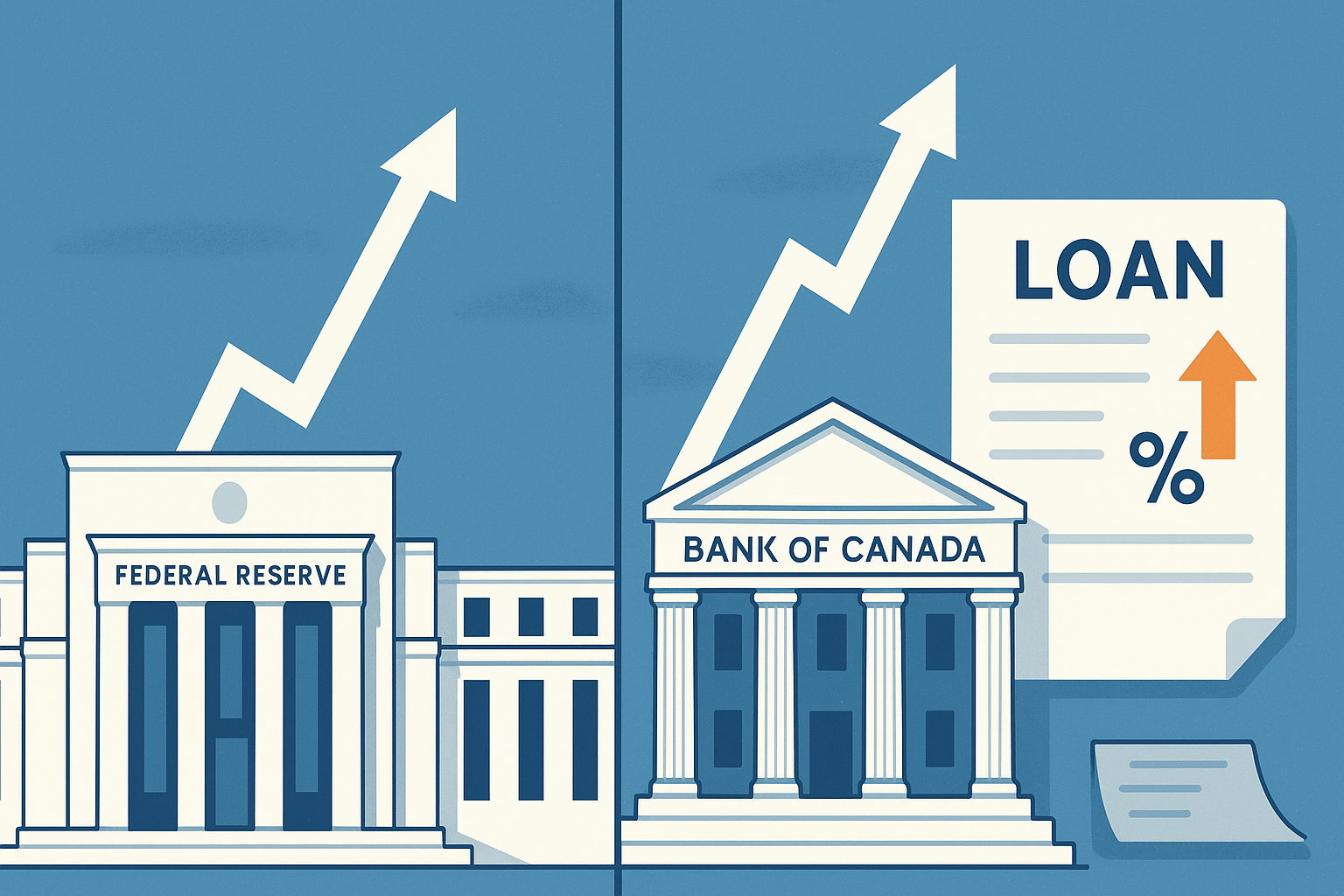1 (800) 584-0324
Business owners often ask: Why are loan rates rising? The answer lies in interest rate policy—the actions of central banks like the U.S. Federal Reserve (Fed) and the Bank of Canada (BoC).
From rate hikes to new banking regulations, central bank policies directly affect business loans, shaping costs, approval odds, and credit availability. Understanding these policies helps you plan smarter financing strategies.
How Interest Rate Policy Affects Business Loans
When the Fed or BoC adjusts policy, it creates ripple effects:
- Prime rate changes: Business loans are often tied to prime, which rises when central banks hike rates.
- Higher loan costs: Interest payments on variable-rate loans increase immediately; fixed loans become more expensive for new borrowers.
- Tighter credit: Regulations requiring banks to hold more capital (e.g., Basel III Endgame in the U.S.) may limit lending.
- Risk-based pricing: Lenders pass policy-driven costs onto SMEs with higher spreads.
Fed Policy: Key Impacts in the U.S.
- Interest rate hikes: Each 0.25% increase raises borrowing costs for SBA loans, lines of credit, and equipment financing.
- Quantitative tightening: By reducing bond purchases, the Fed pushes long-term rates higher, affecting commercial real estate and term loans.
- Regulatory shifts: The Basel III Endgame rules will require U.S. banks to hold more capital, making credit scarcer for SMEs.
BoC Policy: Key Impacts in Canada
- Policy rate adjustments: The BoC sets the overnight rate, influencing prime and floating-rate loans for businesses.
- Inflation targeting: Aggressive hikes to control inflation increase costs for working capital and CSBFP loans.
- Bank regulation: Stricter capital buffers for Canadian banks may reduce SME loan approvals.
Interest Rate Policy Business Loans: Strategies to Manage Impact
1. Lock in Fixed Rates
- Refinance variable-rate loans into fixed-rate agreements while favorable options are available.
- Stabilize monthly payments to protect cash flow.
2. Strengthen Creditworthiness
- Maintain a healthy Debt Service Coverage Ratio (DSCR) and credit score.
- Lenders are more cautious during tightening cycles.
3. Diversify Financing Sources
- Explore alternatives like asset-based lending, private credit, or invoice factoring when banks pull back.
4. Monitor Central Bank Signals
- The Fed and BoC issue regular updates (e.g., FOMC statements, Monetary Policy Reports).
- Align loan applications with rate pauses or cuts.
5. Consider Hedging Instruments
- Larger companies can use interest rate swaps or caps to manage exposure.
- SMEs can time short-term vs. long-term borrowing strategically.
U.S. vs Canada: Practical Example
- U.S.: A Fed rate hike raises the prime rate, increasing SBA 7(a) loan rates by the same increment. Borrowers face higher payments immediately.
- Canada: A BoC overnight rate hike lifts variable-rate CSBFP loans, raising costs for SMEs relying on working capital facilities.
Pros and Cons of Borrowing During Tight Policy
Pros:
✅ Locking in rates today may prevent higher future costs.
✅ Credit availability is still open in many sectors.
✅ Alternative lenders step in where banks restrict lending.Cons:
❌ Higher borrowing costs reduce profitability.
❌ Tighter credit criteria mean more rejections.
❌ Regulatory changes (like Basel III) may restrict SME loan supply.
Confused about how interest rate policy affects your business loans? Agile Solutions helps companies in the U.S. and Canada secure the best financing options—navigating rate hikes, regulatory shifts, and lender requirements.
👉 Book a consultation today at agilesolutions.global or email us at info@agilesolutions.global
#InterestRates #BusinessLoans #FederalReserve #BankofCanada #AlternativeLending #PrivateCredit #SBA #CSBFP #CapitalMarkets



